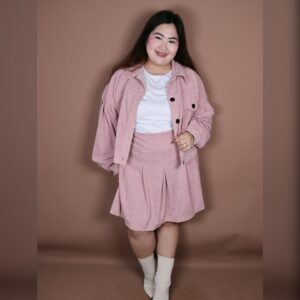As the fashion world continues to face various challenges and campaigns that come and go, the most important one remains to be the fight for body inclusivity. However, this fight may be overshadowed by a more pressing issue of climate crisis, hence the fight for sustainable fashion.
While both causes are equally important, should one eclipse the other? Or should they just co-exist? Well, they are co-existing already, both powerful in their own campaigns. Yet, fashion brands cannot seem to find the balance championing the two: either they just stick with sustainability, or expand their size options, but they can’t do both, unfortunately.

The post-pandemic era has opened doors for style revolution, giving more opportunities for women with plus-sized bodies to shop fashion items suitable to their sizes. Still, most if not all of these women are also proactive in terms of sustainable consumption, thereby limiting their options for plus-size clothing. Simply put, plus-size clothing made with sustainable materials are more expensive, given the fabric quality and the ethical production practices. This gap perpetrates the inaccessibility of sustainable clothing among women with plus-sized bodies. The promise of a sustainable ‘sustainable fashion’ has proven to be an oxymoron, where the materials and fabrics used for sustainable clothing, coupled with ethical production practices, result to expensive market value, and not many people can afford such luxury, more so by plus-sized women.
So where do we go from here? Where do we shift our focus instead of pitting these two causes against each other? Plus-sized women have long suffered from the repressive norms of the fashion industry, and it would be completely counterproductive to subject them to scrutiny just because they cannot afford sustainable clothing, or they don’t have a lot of options for it. We need to stop excluding them, and instead, start inviting them into important discussions regarding ethical and sustainable fashion.

Embracing the core of sustainability in the fashion industry involves a holistic approach— to accommodate plus-size options in the entire production process as well as in the marketing campaigns. Inclusivity and sustainability should go hand in hand, both in saving the planet and making a better society. Fashion brands can start hiring plus-sized employees to ensure they understand their customers. They should get plus-sized models as well for their fittings, and include these models in their marketing campaigns, continuously challenging the traditional norms and hopefully, reach a wider audience. Ultimately, fashion brands can work proactively with these marginalized groups, because they too, want access to sustainable and ethical fashion.
Written by: Markie Orpiano









